The Ultimate Guide to Email Automation for Ecommerce
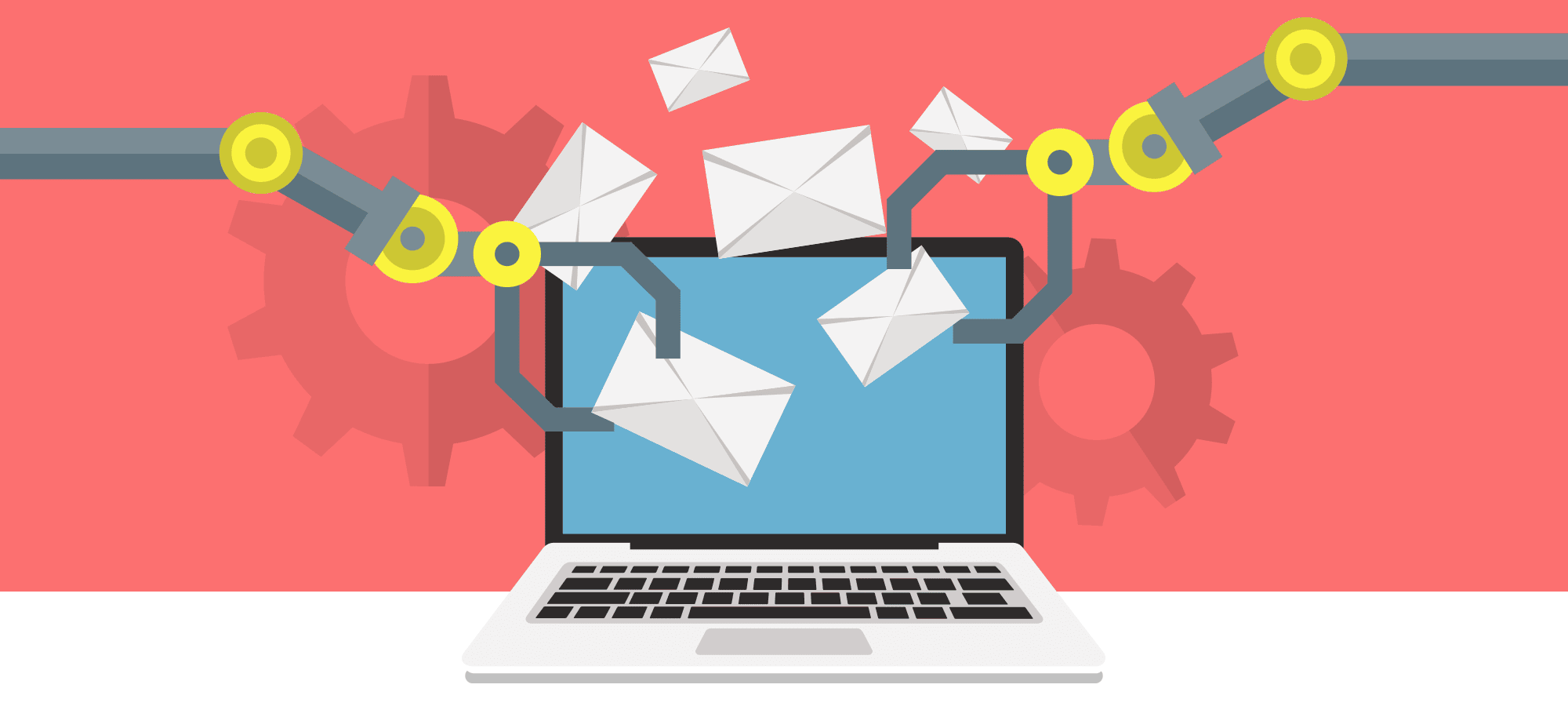
There has been one constant in eCommerce for over two decades: email.
Over the years, Amazon has replaced eBay and Shopify has replaced Yahoo! Stores. But despite all of these changes, email has remained the steady rock of eCommerce sales.
In this guide, I'll walk you through how to effectively use email automation in your eCommerce company to increase your website sales by up to 50% or more.
Why is Email and Email Automation so Important?
So why is email still so powerful, even in 2021? Let's look at a few reasons:
- You own the email for life: Once you get someone on your list, they are yours for life (mostly). We all know the problem with Amazon customers – they're Bezos's customers; not yours. The Lifetime Value (LTV) of an email address can be huge.
- Automated Recurring Revenue: The beautiful thing with email is the ability to automate (and the topic of this article). You can set up flows that go on for weeks, months, or even years that maintain engagement and continuously push your products. It's a true set-it-and-forget-it platform.
- Free sales: Once you have someone on your list, getting incremental revenue from those customers is essentially free. When you sell someone on Amazon a second and third product, you're paying 15% commission each time.
- Email helps product launches: Initial traction is critical when launching a new product, whether on Amazon or elsewhere. An email blast to your healthy email list (hopefully consisting of at least some previous loyal customers) can help get you that initial traction.
What about GDPR?
You may have heard of the General Data Protection Regulation (GDPR), legislation which affects how businesses can market to citizens of the EU.
GDPR has similar rules for email marketing as other email marketing legislation such as CASL in Canada and CAN-SPAM in the U.S. One area it did affect significantly though is pre-ticked boxes.
With GDPR, users must actively give their consent to receive marketing emails. This means automatically opting your website customers into an email newsletter is a no-no.
How to Use Email Flows to Double Your Website Sales
A flow is simply an automated email series that gets triggered on some event such as when someone purchases a product or signs up for an email list.
Every email service provider (ESP) seems to call a flow something different. MailChimp calls them automation and many simply call it an autoresponder. In this article, we'll call them flows.
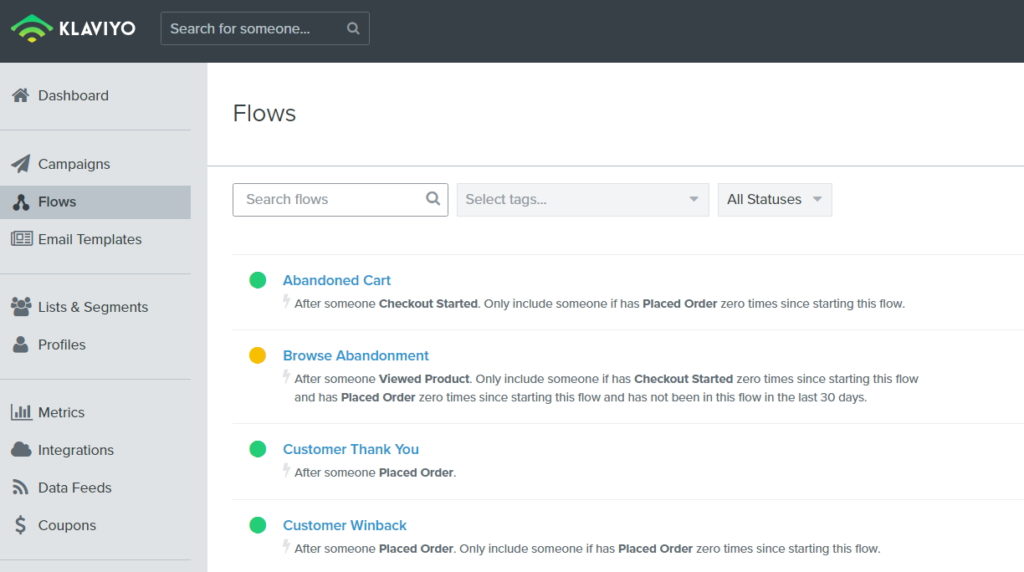
In eCommerce there are several flows that every company should have:
- Abandoned cart
- Customer win-back
- Purchase confirmation/thank you flow
- Some lead magnet flow for non-customers
How many of these flows does your company use? If you're not using all of them you are leaving easy money on the table.
Which email client?
Once you're sold on the idea of the importance of email marketing, it's time to choose an email service provider (ESP).
There are countless ESPs but the most popular choices are as follows:
- Klaviyo
- MailChimp
- Drip
- aWeber
- Infusionsoft
For eCommerce companies though, there is really only one choice: Klaviyo.
Klaviyo is the new kid on the block but quickly gaining popularity. In fact, it recently raised $150million.
Klaviyo is the dominant ESP in eCommerce largely for its complex series of triggers you can set. For example, you can set up Klaviyo with something as follows:
Email clients who purchased garlic presses but not garlic peelers in the last 60 days
Other email clients are catching up with Klaviyo's functionality but they're still far behind.
The other thing to consider is integration with your Shopping Cart. For most reading this, that will mean integration with Shopify. Unfortunately, not all ESPs integrate with Shopify (including Mailchimp, after a well-publicized breakup). Klaviyo does though, another reason we give the nod to them. Without a native integration, you're left with a sometimes unreliable Zapier integration.
With that being said, almost all ESPs support some type of automation and setting up a simple multi-part email flow is 80% of the equation.
Integrate Your ESP with Your Shopping Cart
The next thing you want to do is to integrate your ESP with shopping cart.
Your most profitable email is always going to be that of a current customer. You want to make sure that you're getting your current customers onto your list and ensure that you're continuously staying engaged with them after they purchase.
There are countless ESPs and countless Shopping Carts but here's a quick overview of what ESPs do and do not natively integrate with Shopify:
- Klaviyo: Yes
- MailChimp: No (Zapier required)
- Drip: Yes
- InfusionSoft: Yes
Without a native integration with Shopify through an App you'll be relying on a Zapier integration. Zaps have a tendency to break over time and are not as real-time as a native integration and are best avoided if possible.
Increase Your Website Sales 15% (or more) in Ten Minutes
Want to increase your sales by 15% or more in ten minutes? Sounds too good to be true, right? It's not.
The vast majority of websites don't have the simplest flows to implement: abandoned carts and win-back campaigns.
Consider this. 60-80% of shopping carts are abandoned. That means for every order you get, you're losing between 2.5-5 carts. Ouch.
Klaviyo analyzed millions of abandoned cart emails and found that, on average, abandoned cart sequences convert 3-5% of the time.
Even at a 3% conversion rate, this means that you could increase your number of orders between 7.5-15%! In reality, you won't have the customer's email for every abandoned cart, but you will have it for many.
Win-back campaigns are another easy win.
Win-back campaigns are used to re-engage inactive customer, i.e. to get Joe who hasn't purchased anything in two months to buy again.
The average conversion rate of win-back campaigns is 0.49%.
Now sure, this number isn't that big but it's free money. All you have to do is send these people an automated reminder email after some set interval (60 days is the standard for most win-backs) and 0.49% of them are going to buy something!
Lead Magnets for Non-Purchasers
Abandoned cart and win-back flows are great but they only target people who have at least initiated a checkout. What about the other 97-99% of people who never get that far on your site?
This is where you need some type of lead magnet.
It's critical to get the email address of as many non-purchasers as possible. Retargeting helps to re-capture these people but it's not nearly as effective as having their email address.
Lead magnets can come in two varieties:
- Sales/discount-based lead magnets
- Information-based lead magnets
Sales/Discount-Based Lead Magnets
Sales and discount-based emails are one of the most popular types of lead magnets.
One of the most popular discount-based lead magnets right now is the spin-a-sale lead magnet.
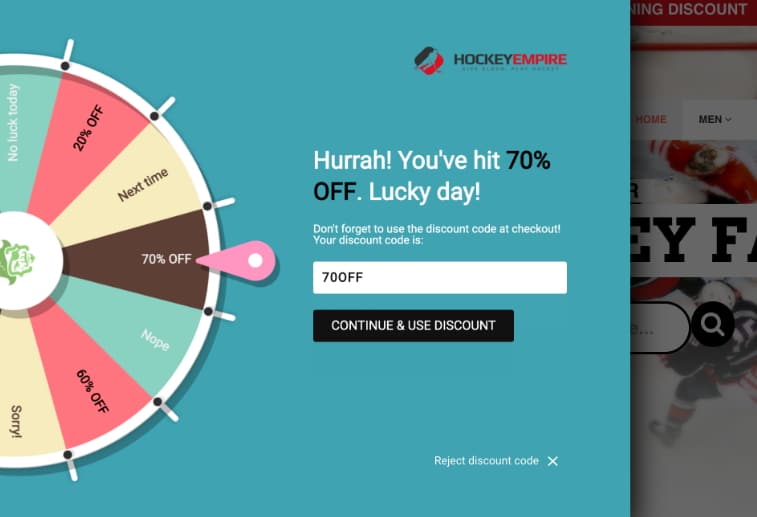
An alternative to the spin-a-wheel is simply to offer a flat rate discount to customers. From my old direct-mail marketing days there was a popular axiom that to be most effective, a discount should be 15% or more. The problem is, in a low-margin eCommerce environment, 15% is significant.
On top of this, coupons can be a destructive force for your company. They train your customers from the beginning to look for discounts and studies find that consumers associate coupons with lower quality.
What about the vast majority of people who are visiting your site at the top of the sales funnel? This is where a Value-First Lead Magnet™ can do wonders.
Value-First Lead Magnets™
A value-first lead magnet delivers some type of value, normally through the way of some information or learning, first to visitors before soliciting a sale.
Here are some of the most common types of value-first lead magnets:
- Free PDF eBook
- Free white-paper
- Free mini course
- Free samples/downloads
We've all encountered free eBook lead magnets before. They may be old-school but they're still incredibly effective.
The major drawback to an eBook or white paper is that it's normally consumed in one sitting. This is why we prefer to use the free mini-course lead magnet for most of our brands, including EcomCrew.com!
The Rule of 7
There's a famous marketing adage called The Rule of 7.The Rule of 7 says that a consumer needs to “hear” the advertiser’s message at least 7 times before they’ll buy.
This is why we strongly advocate stretching your content out over at least 7 messages and not delivering everything at once.
Free 5-Part Mini-Course
The advantages of a 5-part mini-course are as follows:
- Avoid the use of discounts
- Drips content to your customers over several days
- Provides value first and then asks for a sale
- Establishes authority for your brand
Mini-courses can be just as effective for eCommerce companies as well.
For example, in my previous company, we used to offer a free eBook on how to anchor your boat. We have seen an opt-in rate of close to 5% on this lead magnet. Because our site was hyper-focused on anchoring and docking products for boaters this eBook was highly relevant for our users.
For EcomCrew.com, we use a 5-part mini-course series to collect almost all of our email addresses and email generates almost all of our revenue.
Finding a Topic and Designing Your Course
The topic of your course should involve the use of your product but should not be exclusive to your product.
For example, if you were selling garlic presses then your course could be “How to Cook Amazing Dinners with Garlic” instead of “How to crush garlic”.
You want to break your mini-course into five parts. A general outline looks like this:
- Introduction to the course
- Overview of course topic problem and solution
- Overview of the most common tools/products used
- How to use the tools
- Conclusion
Each topic lesson should be about 500-1000 words (if written) or 5 minutes, if in video format.
Should your courses be in video or text format?
A video or text-based course (or both) are completely fine.
Videos tend to establish better rapport and trust with your audience but also require more time and effort to set up. They also require somebody to be in front of the camera.
A big component of your courses is to familiarize people with your brand and videos help to do this very effectively.
A written course is just as acceptable and has the benefit of being able to be easily repurposed for other content whether as instructional pamphlets for your products or blog posts.
Hosting & Delivering Your Course
You can deliver your course in one of three ways:
- Only through email
- Through email and through landing pages on your Shopify/another website
- Through email and a Learning Management System
Delivering your course only through email is the easiest setup. You simply include all of your content (written or video) directly in emails. This is not recommended as you want to train your customers to open your emails and click through to your website.
The next best option is to set up landing pages on your website for each lesson. These can simply be Shopify Blog topics on your website (if using Shopify). In each course lesson email, you will simply link to that blog topic.
The final option is to use a full-fledged learning management system or LMS. There are several options out there with the most popular being Kajabi, Thinkific, and Teachable. None of these have a native integration with Shopify. Unless you intend to sell courses in the future, there's no need to use an LMS for your course.
In terms of actually emailing out your courses, we like to deliver our 5-part course over 10 days, alternating between lessons and marketing messages. Here would be a sample flow:
- Lesson 1: Introduction to the course
- Introduction to your company
- Lesson 2: Overview of course topic problem and solution
- Company testimonials
- Lesson 3: Overview of the most common tools/products used
- Overview of your company's product offerings
- Lesson 4: How to use the tools
- Your company's top-selling products
- Lesson 5: Conclusion
- Request for feedback for course
By stretching your course out over 10 days you give your customers plenty of time to get acquainted and comfortable with your company.
Conclusion
This guide should give you the fundamentals of setting up some basic email flows in your company.
What types of lead magnets have been most effective for your company? Let me know in the comments below.
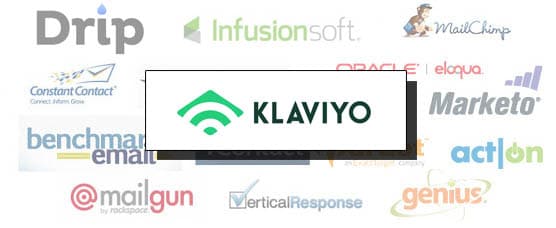
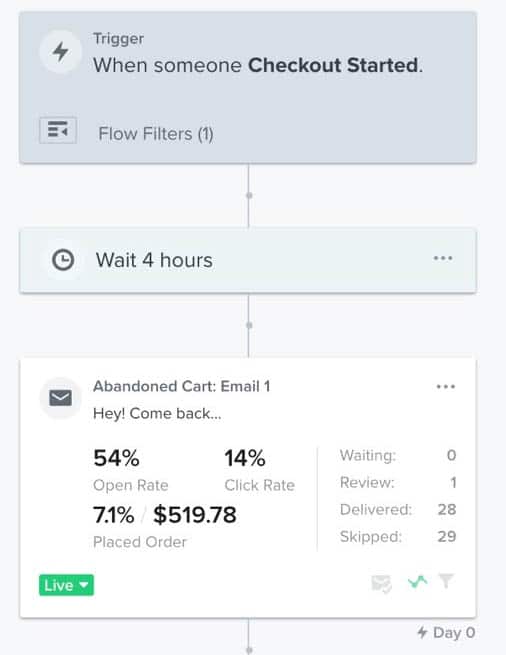
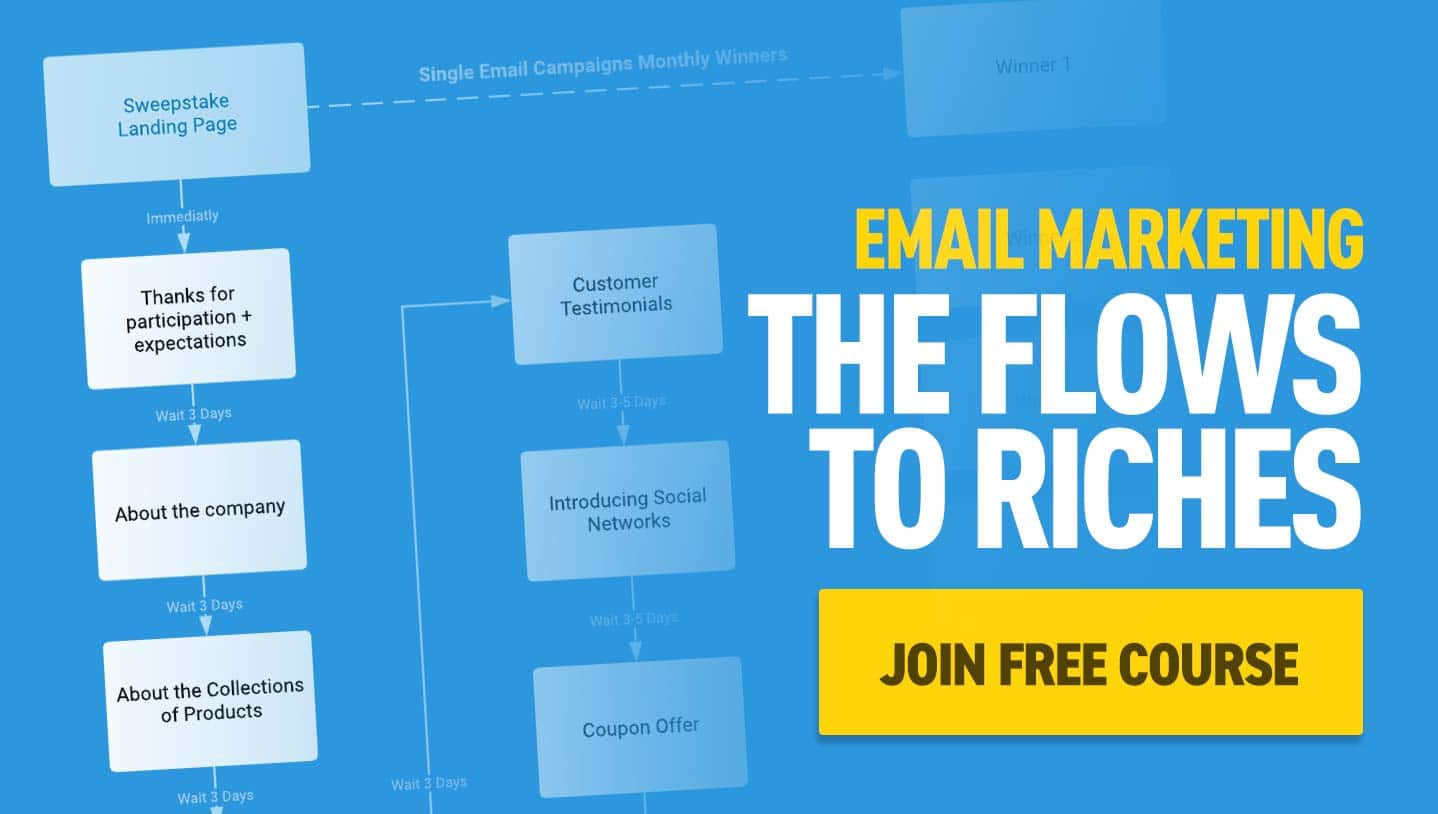

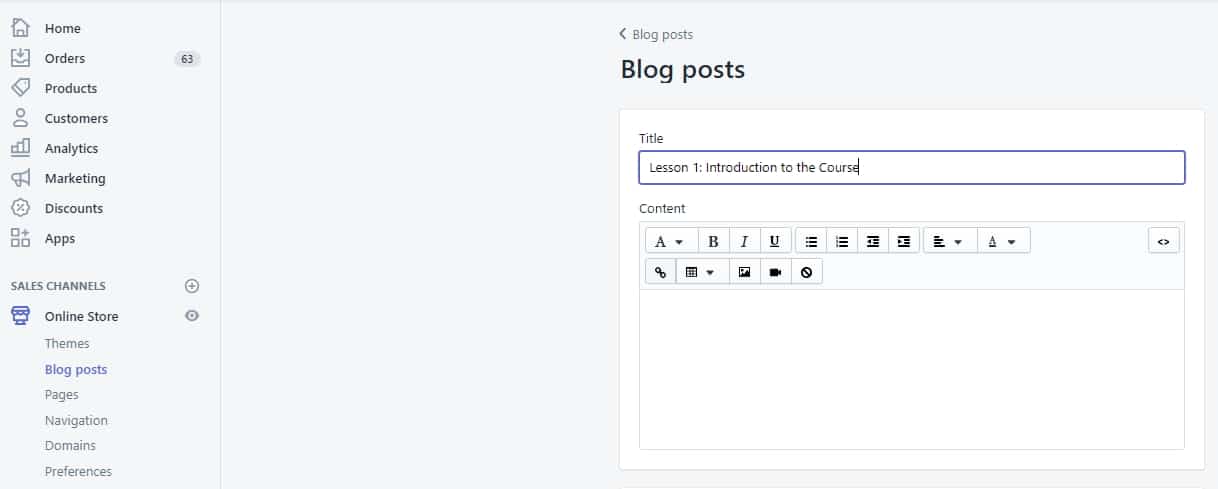




Great article Dave! Thanks for the actionable tips.
Thanks!
Great summary and write-up.
Sounds cliche but, “The money is in the list.” :)
Very true- there’s a lot of businesses STILL run strictly around their lists.
Wow, this is such an extensive article. I love it! I am just getting back into the e-commerce space after being in B2B SaaS for :years: and this was super helpful, Dave. Thank you.
Glad to hear it helped!